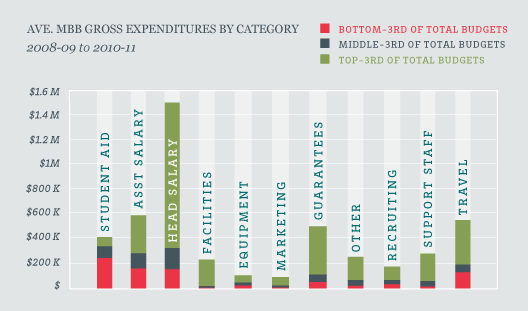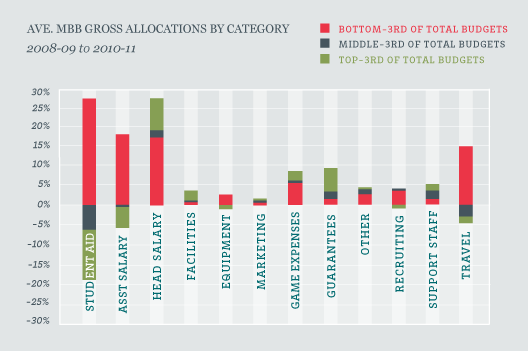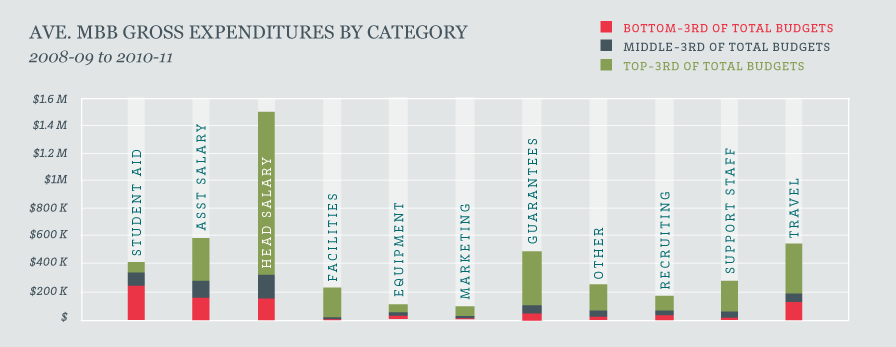
This weekend all eyes will be on Atlanta, GA, where over the course of the last five months, 347 Division-1 men’s basketball programs have been whittled down to just 4 vying to win a coveted national championship. While the championship will be settled on the court by the players, there are several off-court factors which play large roles in the success of a program. In this piece we examine men’s basketball budgets across Division-1 and identify, from an administrative standpoint, important conclusions based on industry practices.
Presented below are the incremental, three-year (2008-09 through 2010-11) average gross expenditures, by category, for Top-3rd, Middle-3rd and Bottom-3rd schools, as sorted by Total Men’s Basketball Budgets. All data from our Win AD database.

If we assume, generally speaking, that increased men’s basketball budgets lead to increased on-court success, we can get a sense of where high-budget (and successful) programs focus their spending relative to the rest of Division-1 programs.
Obviously head coaching is critically important to every program, and we can see the financial commitment large-budget schools are making to attract and retain their program’s leaders. Further, we can also see the incremental, seemingly significant commitments made to other areas such as assistant coaches’ salary, facilities, game expenses, guarantees, support staff and travel.
Examining gross expenditures in this manner only tells a fraction of the story, though, as high-budget programs will naturally out-spend lower-budget programs in gross terms. As such, we present below the incremental, three-year (2008-09 through 2010-11) average budget allocations, by category, for Top-3rd, Middle-3rd and Bottom-3rd schools, again sorted on Total Men’s Basketball Budgets.

Viewing budget allocations in tandem with gross expenditures paints a more vivid picture as to which costs are relatively fixed in nature (i.e., allocations decrease as budgets increase), and which are not. And it’s the expenses which aren’t fixed which really allow administrators to direct spending strategically relative their peers, in an effort to build their program’s success on the court.
Looking at gross expenditures in tandem with budget allocations, and using spending trends of higher-budget schools as a guide, schools working to grow their program should make finding and retaining an excellent head coach their all-consuming priority.
With a quality leader in place, importance shifts (again, purely from an administrative standpoint) to buying as many home games as possible, and providing a strong support staff around the program, while investing in facilities and game day expenses, in order to raise the program’s profile for recruits and the public alike. All other expenses, more or less, are noise from an administrator’s perspective as they relate to a program’s success.




